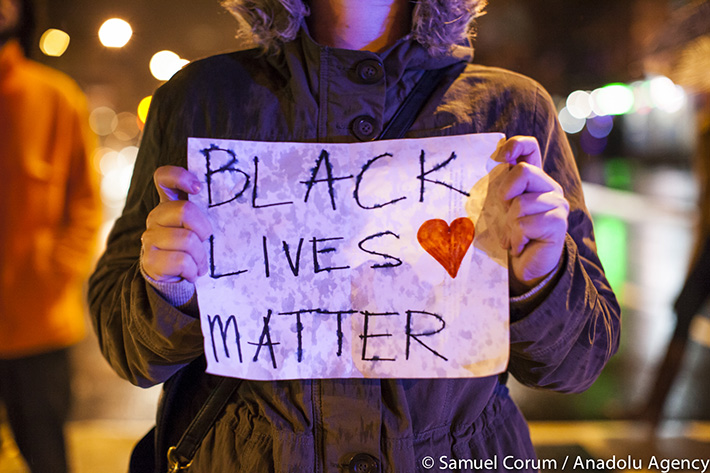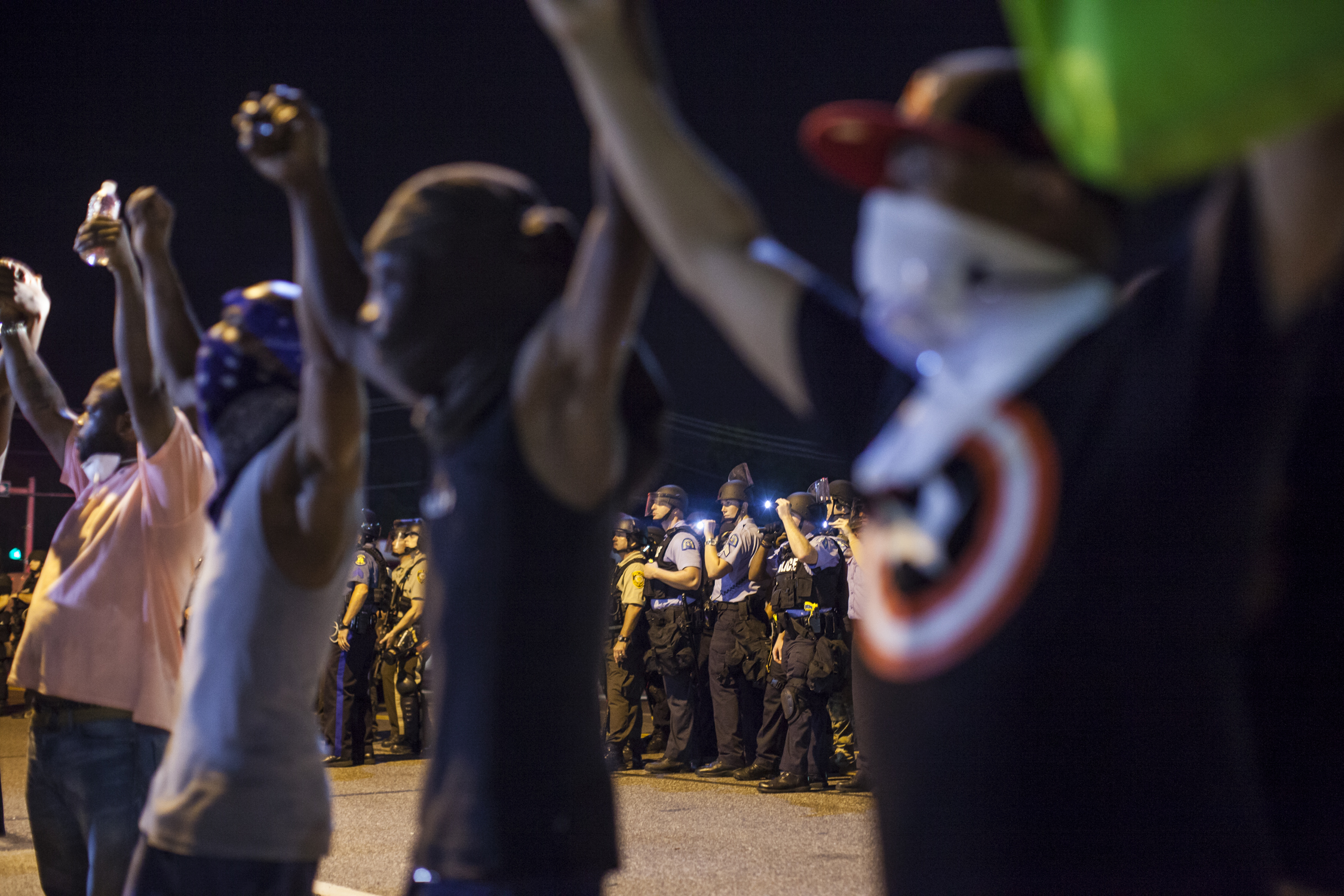By Fabiola Joubert
From his home in Washington, D.C., Corcoran alumnus Sam Corum, B.F.A. ’12, watched images of the turmoil in Ferguson, Mo., flash across his television screen. The fatal shooting of Michael Brown, a black teenager, during a confrontation with a white police officer had shocked Mr. Corum. As the protest and the police response escalated, the freelance photographer realized he was seeing history in the making.
He packed his cameras, rearranged prior commitments and drove 13 hours to Ferguson, near St. Louis. He wasn’t on assignment. None of his clients were paying him to go to Ferguson. But he recognized that the drama in the small Missouri town could be a turning point in America’s racial dialogue—and he wanted to be on the scene to document it.
A former Marine Corps combat photographer, Mr. Corum’s art ranges from capturing Iraqi combat zones to documenting parents caring for their mentally disabled adult children.
He arrived in Ferguson at 4:30 a.m. Aug. 18. After sleeping a few hours, he donned his old flak jacket from tours in Iraq—a jacket he never expected to wear stateside. Scribbling the word “press” on a strip of duct tape, he slapped it to the front of his jacket, strapped on his cameras and headed to the streets.
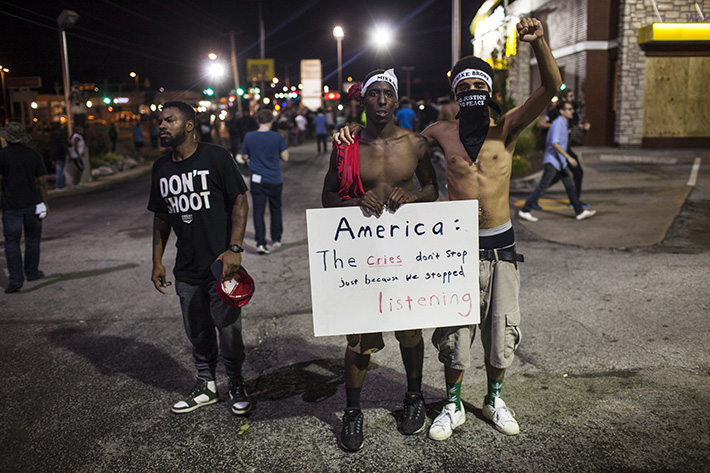
In Ferguson, Mr. Corum saw an opportunity to photograph another kind of tale. His images could tell the narrative “behind a complex story that was being reduced to simple headlines and sound bites,” he said. Ferguson would be his first project covering social justice issues.
“The situation with Michael Brown was extremely sad—but I saw a bigger story,” he said.
In a community that has long been plagued by allegations of racial profiling and tensions between police officers and the community, the Brown shooting “was the boiling point for everything that’s been going on for decades.”
Below are photos from Mr. Corum’s time in Ferguson. For the extended story, visit the Corcoran School of the Arts and Design's Unveiled blog.

When he first arrived, Mr. Corum captured the energy and enthusiasm of protesters.

Mr. Corum stayed in Ferguson for a month to tell the story of the city.
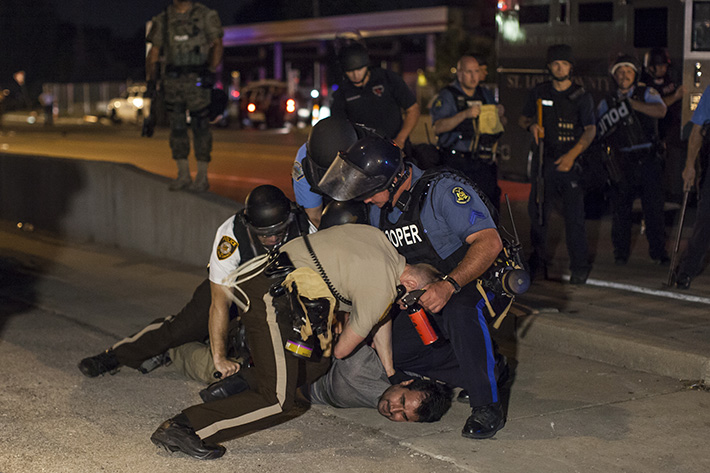
He captured tensions rising in the oppressive August heat, snapping images of police arresting photographers and protesters.
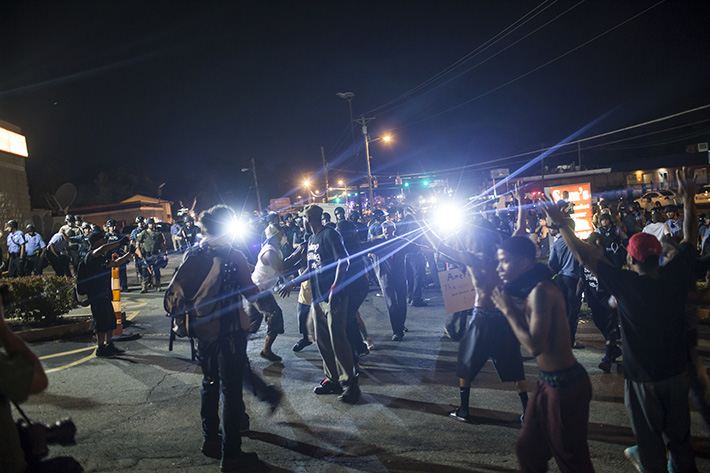
“It’s not all blood and violence. There is…definitely a large amount of rage, but not with intent to destroy. It’s a community that cares," Mr. Corum said,
